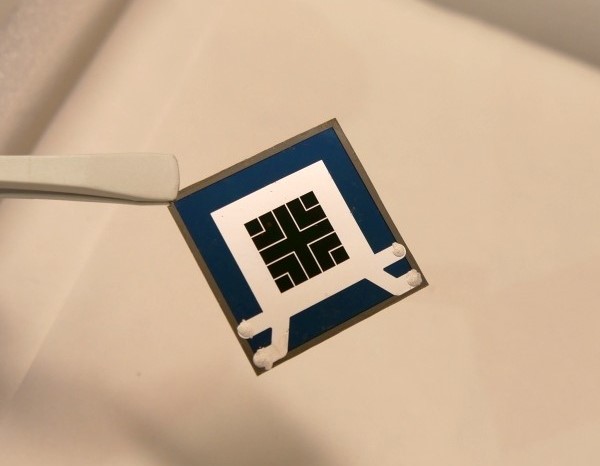Scientists at Germany's Fraunhofer Institute for Solar Energy Systems ISE have demonstrated a triple-junction solar cell with a perovskite-perovskite-silicon subcell configuration.
They said the cell achieved an open-circuit voltage of over 2.8 V, which compares to conventional cells with values ranging between 0.7 V and o.8 V. “This is a record value for this type of solar cell and demonstrates how photovoltaics combining perovskite and silicon offers huge untapped potential,” said the research's lead author, Juliane Borchert.
The paper “Monolithic Two-Terminal Perovskite/Perovskite/Silicon Triple-Junction Solar Cells with Open Circuit Voltage >2.8 V,” published in ACS Publications, explained that the cell's perovskite absorber was made with perovskite materials with an energy bandgap ranging from 1.56 V and 1.83 V.
“We note that the bandgaps combined in this work are not the final optimum bandgaps for a triple-junction solar cell,” they said. “However, the focus of this paper is on process optimization and integration of the subcells into triple-junction devices, and the findings are applicable to other perovskite compositions.”
The three subcells were designed with three different architectures.
The bottom cell was made with an indium tin oxide (ITO) substrate, a hole transport layer (HTL) made of poly-triarylamine (PTAA), an interfacial layer made of the PFN polymer, a perovskite absorber, an electron transport layer (ETL) based on a buckminsterfullerene (C60) and tin(IV) oxide (SnO2) layer, and a gold (Au) metal contact.
The second device uses an HTL made of PTAA, a PFN interlayer, a perovskite absorber, a C60 ETL, a SnO2 layer, an ITO layer, a silver (Ag) metal contact, and an anti-reflective coating based on magnesium fluoride (MgF2).
The upper cell relies on an ITO substrate, a carbazole (2PACz) layer, a perovskite absorber, a C60 ETL, a SnO2 layer, an ITO layer, a silver (Ag) metal contact, and an anti-reflective coating based on magnesium fluoride (MgF2).
Tested under standard illumination conditions, the triple-junction cell achieved a power conversion efficiency of 20.0% PCE, an open-circuit voltage of over 2.8 V, and short-circuit current density of 8.9 mA/cm2, and a fill factor of around 78%.
“A high voltage therefore indicates that the basic physical characteristics of the solar cell are appropriate and that the fundamental aspects needed for a very efficient solar cell are in place,” the researchers stated.
“While we are currently in the process of scaling up the development of perovskite-silicon tandem solar cells and readying them for use in industry in our Pero-Si-SCALE project, it’s also fantastic to see how triple-junction solar cells hold so much potential for advancing the concept in the future,” said Stefan Glunz, Division Director for Photovoltaics at Fraunhofer ISE.
“Further optimizations are required to bring it to the level of perovskite/silicon dual-junction solar cells and eventually surpass them,” the paper notes. “Moreover, the long-term stability of these solar cells under standard test conditions and elevated temperature needs to be addressed in future work.”
This content is protected by copyright and may not be reused. If you want to cooperate with us and would like to reuse some of our content, please contact: editors@pv-magazine.com.




1 comment
By submitting this form you agree to pv magazine using your data for the purposes of publishing your comment.
Your personal data will only be disclosed or otherwise transmitted to third parties for the purposes of spam filtering or if this is necessary for technical maintenance of the website. Any other transfer to third parties will not take place unless this is justified on the basis of applicable data protection regulations or if pv magazine is legally obliged to do so.
You may revoke this consent at any time with effect for the future, in which case your personal data will be deleted immediately. Otherwise, your data will be deleted if pv magazine has processed your request or the purpose of data storage is fulfilled.
Further information on data privacy can be found in our Data Protection Policy.